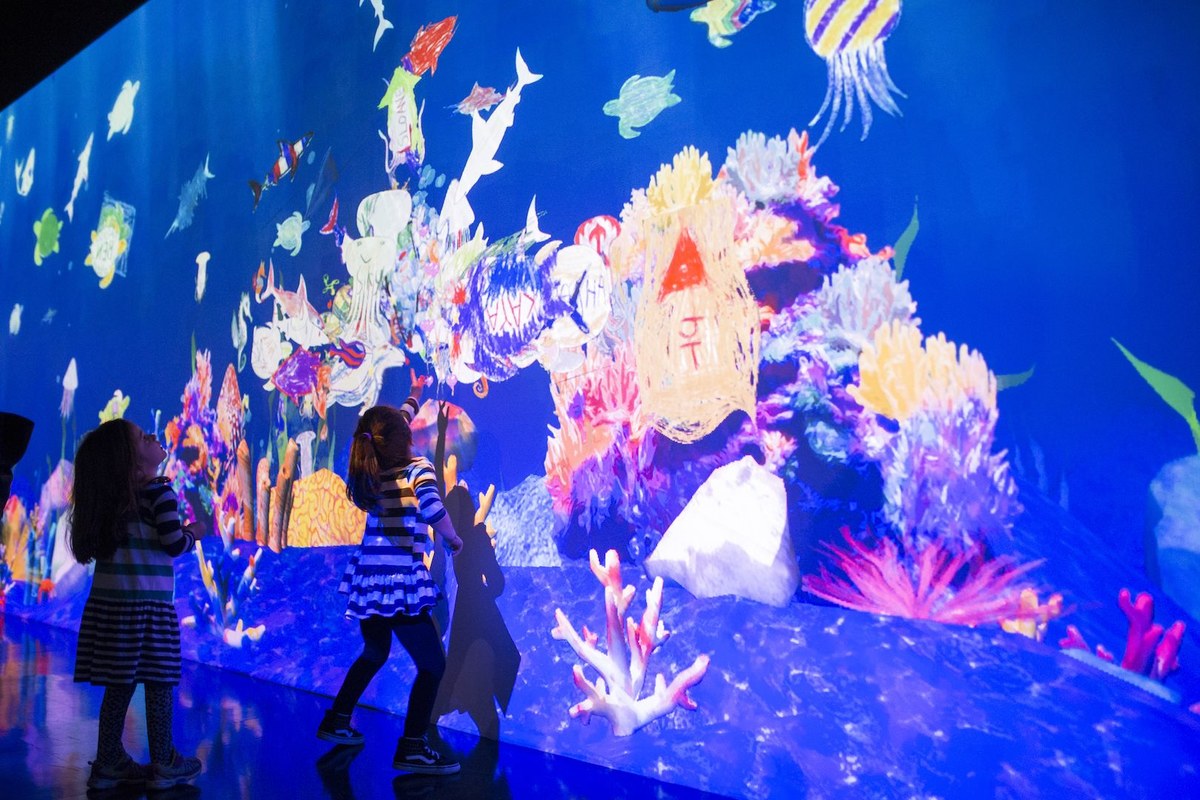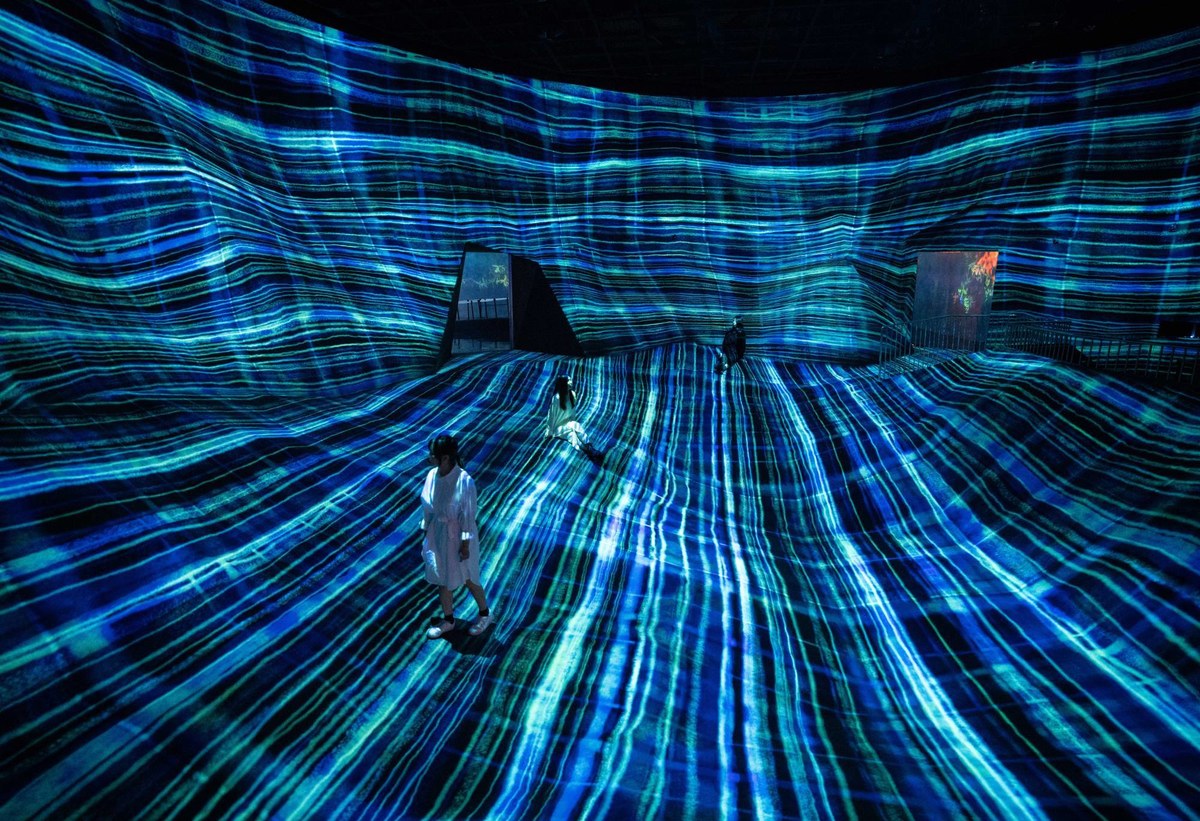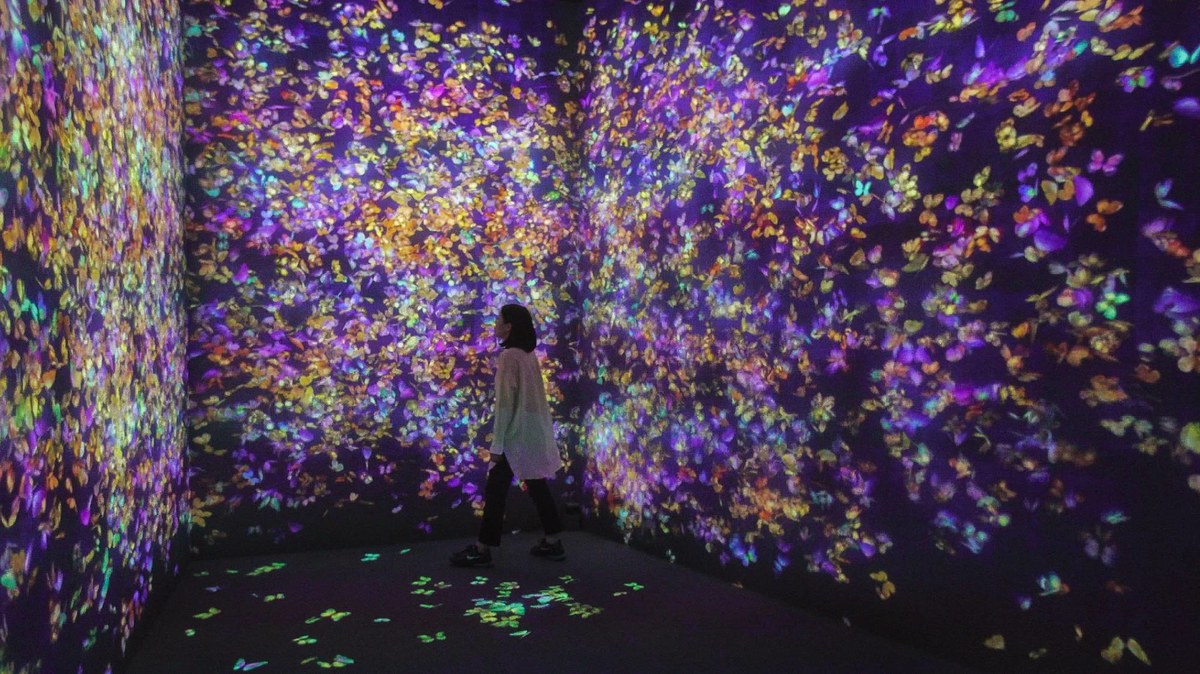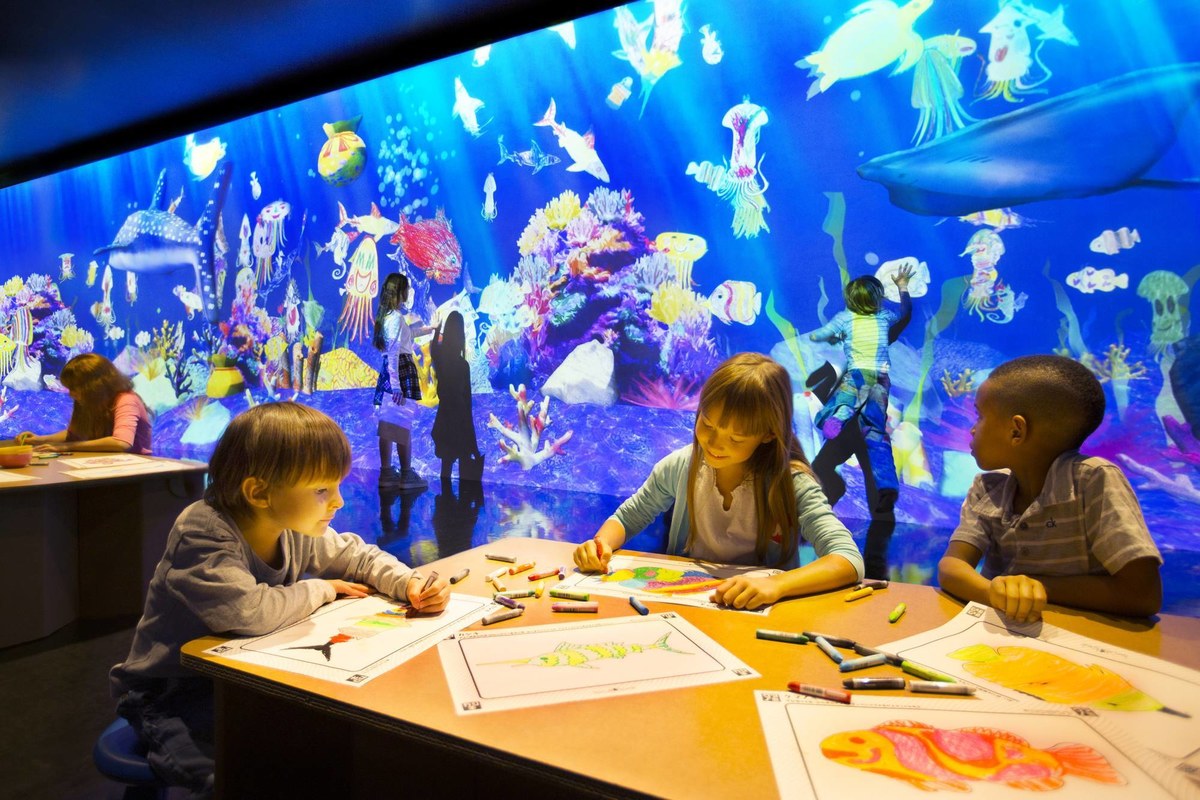DUBAI: Japan’s TeamLab Borderless has brought to life the idea of a world of digital art without boundaries, a museum where art installations can move from one room to another and come alive in different parts of the world simultaneously.
Artworks such as these will be seen in Saudi Arabia, now that its Ministry of Culture has announced plans for a space in Jeddah to exhibit interactive digital artworks created by the Tokyo-based technology group.
TeamLab Borderless Jeddah, scheduled to open in 2023, will feature an array of interconnected artworks created by a group of physicians, CGI animators, engineers and mathematicians.
Kudo Takashi, TeamLab’s communications manager and brand director, said the plan is to create an art space in Jeddah that is positive and futuristic. “What we create isn’t something we can explain through words,” he told Arab News Japan.

Japan’s TeamLab looks to explore the world “beyond borders,” merging both arts and technology to create their Borderless exhibitions around the world. (Via TeamLab/Supplied)
Takashi said growing up in the UAE, he developed a deep appreciation and love for Arab countries, which inspired him to bring innovation to the region’s art landscape.
Formed in 2001, TeamLab sees itself as an international art collective. Its first permanent exhibition, TeamLab Borderless, opened at Tokyo’s Mori Museum in 2018.
The artworks are displayed across a 10,000-square-meter space. Another permanent exhibition opened in Shanghai, China, in November last year.
TeamLab museums are known for their interconnectivity between installations in different locations. Takashi said entering any of these is like entering a unified digital world.
“There’s no boundary between the visitors and the artwork. If you’re standing inside our space, some flowers will (start to) bloom around you. If you touch them, you’ll activate them,” he added.
Borders are mere “illusions,” Takashi said, adding: “Despite our age, location or background, we’re able to connect. As humans we naturally find a way to connect.”
This is apparent in TeamLab’s art, where if a visitor touches a piece in Tokyo it will be affected in Shanghai, demonstrating how interconnected the installations are.
Most of TeamLab’s work is programmed to respond to light, sound and touch. One piece, “Hopscotch for Geniuses: Bounce on the Water,” involves visitors hopping on shapes that appear on the ground, activating images and depictions of fish, insects and other animals.

Japan’s TeamLab looks to explore the world “beyond borders,” merging both arts and technology to create their Borderless exhibitions around the world. (Via TeamLab/Supplied)
Another piece, “Multi-Jumping Universe,” allows people to direct the flow of light and music around them simply through their own movements.
The Jeddah location is near Al-Balad, the city’s old town and a UNESCO World Heritage site.
There are plans for a children’s section, the objective being to inspire the next generation of artists through its exhibits.
The children’ sections at several of TeamLab’s other museums include experiences such as the Sketch Aquarium that highlight the power of imagination.
Children are invited to color in drawings of sea creatures, scan the artwork and then watch as their colored art piece floats in a virtual aquarium.
TeamLab Borderless Jeddah is in line with Saudi Arabia’s Vision 2030 reform strategy’s Quality of Life Program, which seeks to diversify the country’s economy through cultural and artistic ventures.
Saudi artists will be involved in the project, and arrangements for a similar exhibition in Riyadh are in the pipeline.
Takashi said TeamLab’s aim is to “explore the new relationship between humans and their world,” adding that in the 20th century people entered a new digital era that changed their relationship with the world and others.
The idea behind the installations, Takashi said, is to create an extension of people’s imagination and creativity.
TeamLab’s website puts it this way: “Within the digital domain, art is able to transcend physical and conceptual boundaries. Digital technology allows art to break free from the frame and go beyond the boundaries that separate one work from another.”
Takashi said it is important to consider the feelings and emotions that art installations can evoke in visitors.
“Human beings aren’t logical creatures. Groups can be controlled through logic, but as individuals they can be very emotional,” he added.
In order to elicit feelings and emotions in their patrons, however, TeamLab Borderless installations utilize different software and programs that the company created together with various hardware.
“In Japan’s Borderless, we use over 470 projectors and over 520 high-spec PCs,” Takashi said, adding that the technology is set in place to create a higher dimension in the immersive experience, something the organization is looking to expand on.
Explaining that the shift in perspective from 2D to 3D enhances how we experience art, he said: “We understand the world not just through our eyes and brains; the process is also physical and emotional.”

Japan’s TeamLab looks to explore the world “beyond borders,” merging both arts and technology to create their Borderless exhibitions around the world. (Via TeamLab/Supplied)
TeamLab has reconstructed many ancient Asian drawings using today’s technologies, and it is a sign of the times to come, he added.
Much of TeamLab’s work is inspired by Japanese traditions of immersive technology-based environments and workplaces, symbolized for instance by Takashi Murakami’s postmodern art movement Superflat, which combines the flatness of commercial graphic design and characters from popular Japanese anime and manga (animation and comics) with the influences of fine art.
Takashi maintains that good designs are those that can be used by everyone. “If you’re the only person who can understand a design, it isn’t good,” he said.
As for the relationship between art and design, he said: “If I compare what’s art and what’s design, design is the answer and art is the question.”
He believes that the right answer is always changing. “A good business model or answer may (have been) the correct answer in the 18th century, but not in the 19th century, due to the industrial revolution,” he said.
TeamLab’s aim is to create the questions, and for visitors to find the answers within the interactive artworks displayed in its installations.
Takashi said the overarching question that TeamLab is trying to answer is: “The borderless world is very beautiful, right?”

TeamLab also has a special section for children, which will be implemented at Borderless Jeddah to inspire the next generation of creatives. (Via TeamLab/Supplied)
Art may seem “weird,” but it is simply expanding on the questions asked, and the answer is in “global feelings,” he added.
Summing up the purpose of the Borderless exhibitions, Takashi said it is neither geographical nor political — the key idea is to understand the relationship between humans and the world.
He said TeamLab is “lucky to find good partners in Saudi Arabia who could understand what we’re talking about.” Equally, he is excited about the TeamLab projects that will be announced in the coming year.
Twitter: @DianaFarahANJP

































